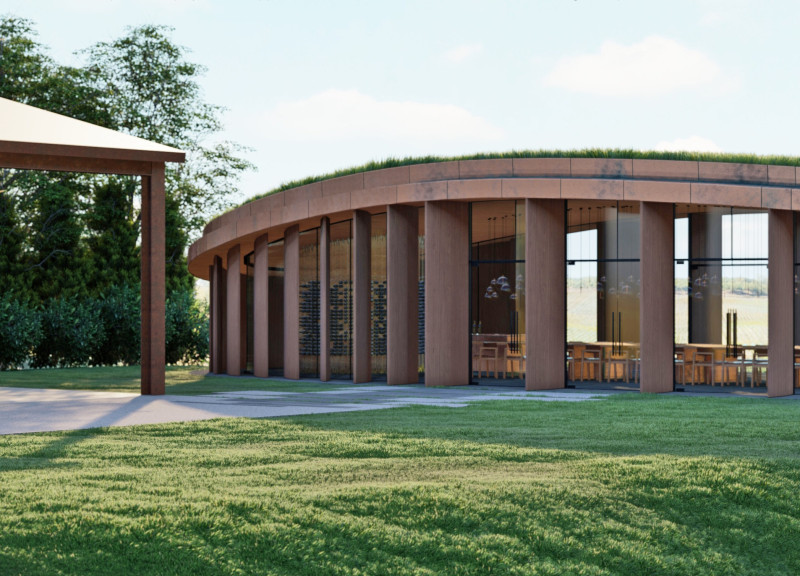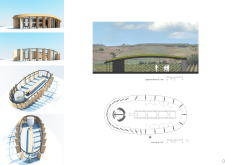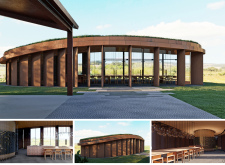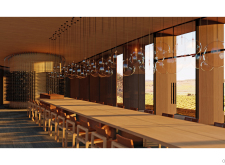5 key facts about this project
The primary function of the pavilion is to serve as a tasting venue where visitors can engage with the local wine culture. The layout facilitates a communal tasting experience, featuring a central linear table around which guests can gather. This arrangement fosters interaction and enhances the social aspect of wine appreciation. Adjacent to the tasting area are the kitchen and wine cellar, ensuring a smooth transition between wine preparation and consumption.
The structure employs a distinct oval form that responds to the contours of the site, providing an unobtrusive silhouette against the landscape. Notable features of the design include a green roof that improves thermal performance and integrates the building into its environment. This aspect not only contributes to energy efficiency but also promotes biodiversity and visual harmony with the vineyard.
Materials used in the construction include rammed earth and copper panels, chosen for their sustainability and aesthetic appeal. The rammed earth walls establish a tactile connection to the land, while the copper cladding adds warmth and durability. Stone tiles on the floor create a natural ambiance that resonates with the vineyard's character. These materials are carefully selected to ensure longevity and minimal environmental impact.
The architectural design emphasizes transparency with large glass facades that open the interior to the outdoor landscape. This design choice enhances the sensory experience by allowing natural light and views to enrich the tasting experience. Interior elements, such as pendant lighting and furniture arrangement, are strategically designed to promote comfort and encourage social interaction.
In summary, The Tasting Pavilion represents a thoughtful approach to architectural design, focusing on sustainability, sensory engagement, and the celebration of local wine culture. Its unique features, such as the green roof and communal layout, differentiate it from typical tasting venues. For those interested in a deeper understanding of the project, reviewing architectural plans, sections, and design details will provide further insights into the project's conception and execution. Explore the presentation to gain a comprehensive view of this innovative architectural endeavor.


























